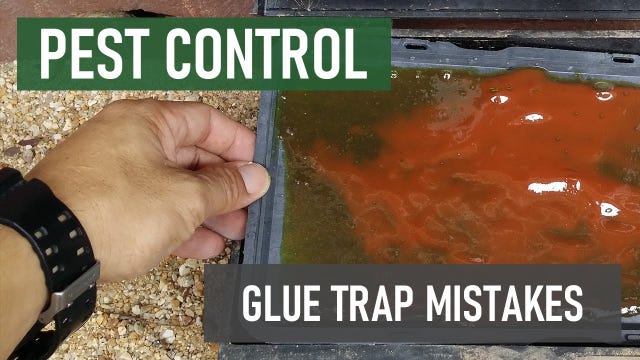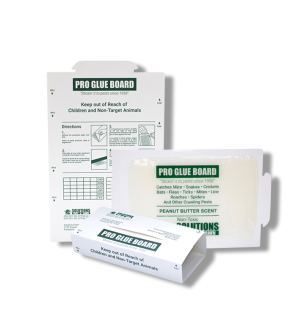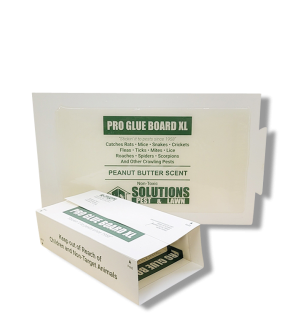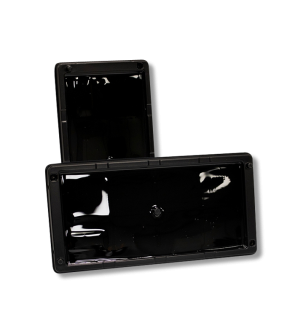Gain access to personalized product screening, the best pricing, rewards, and more!
Most Effective Products
How to Avoid Common Rat and Mouse Glue Board Mistakes
This article is a general DIY guide for homeowners experiencing problems capturing mice or rats with glue boards. Here, you can find common mistakes people make when setting or using rat and mouse glue boards and avoid common mistakes to increase pest capture in the glue board adhesive.
Now that the cooler season is approaching, pests like rats or mice can start to make their way indoors. Even if these pests are not seen, signs of their presence are evident from the prolific amount of waste, scratches, chewed fibers or wiring, and other structural damages. But if you find that you are suddenly sharing your home with one or more rodents, there are ways to control them without toxic chemicals, such as rodent glue boards.
Due to their inexpensive and wide availability, glue traps have become one of the most common forms of rodent control. A rodent glue board consists of a flat cardboard, paper, or plastic board with one side covered in adhesive glue. You will then place the board per the product label instructions. When the rat or mouse scampers across the board, it becomes immobilized in the adhesive, eventually leading to the animal's demise.
Check out our rat and mouse control guide to learn how to completely control rat and mice infestations and lower the chance of them occurring in the first place. While rat and mouse glue boards take a more monitoring approach to rodent removal, they can also be used in permanent control efforts.
Trap Handlement

Rats and mice have a keen sense of smell, detecting various odors from people, animals, and chemicals. Rodents are generally afraid of people; if they smell your scent on the glue trap being used, they will avoid the area altogether.
If a glue trap is being used in a tamper-proof bait station, then some homeowners make the mistake of washing the station with soap. If you do happen to touch the bait station holding the glue board with your bare hands, wash it off only with water before setting it.
Before handling any rodent control product, wear the proper personal protective equipment (PPE), such as gloves, to mask your scent.
Using Bait on Glue Boards

While some rodent control products, like snap traps, are more effective when baited, the opposite is true for glue traps.
Common baits like peanut butter contain oils that will compromise the glue and allow the pest to escape more easily. In fact, for situations where people or pets get stuck accidentally, we recommend applying cooking oil to reduce the trap's adhesiveness. Seeds, cheese, or baits on the glue board surface can also give the rodent a safe pathway to walk upon without touching the trap's adhesive.
We recommend pre-scented glue traps to lure rats and mice into the trap. Consider the following pre-scented rodent glue boards depending on your needs and rodent infestation.
Solutions Pro Glue Board is a smaller, non-toxic glue trap formulated with a peanut butter-scented adhesive to lure mice. It can be folded into a box shape.
Solutions Professional Rat/Mouse Glue Tray is a durable plastic glue board trap for capturing rats, mice, and other crawling pests in low-profile locations. These glue trays are best for areas where the use of pesticides is prohibited and for monitoring rodents after a previous infestation.
Solutions Pro Rat Glue Board XL is a large pre-baited glue board with a peanut butter scent that can be used to capture rats, mice, snakes, and other crawling pests in indoor settings. Unlike the Solutions Professional Rat/Mouse Glue Tray, this product can be folded into a tent shape, but it cannot be used outdoors like the glue tray trap.
All of these pest glue traps use a non-toxic glue formulated with a peanut butter-scented adhesive to which rats and mice will be attracted.
Wrong Placement
Even if you get the best glue traps, you will still have trouble catching rats or mice if the glue board is not put in the right place. Mice and rats have specific habits and behaviors that must be considered when attempting to capture them.
Rats and mice travel along walls to avoid the detection of predators by traveling along walls, foundations, ledges, fences, and other objects. So, if you put a glue board in the middle of a room or on top of stored objects, it's not enough to capture the rat or mouse.
To determine the best spots to place rodent glue traps, look for evidence of activity, such as grease marks along walls, fur, rodent droppings, gnaw marks, and rodent burrows. Since they are shy pests, you must parallel the glue trap to a wall near where you have seen signs of rodent activity.
If you are dealing with mice and using the Solutions Pro Glue Board, fold it into a box to create a seemingly sheltered area more conducive to mouse activity.
Lack of Traps
Unfortunately, seeing just one rodent usually indicates a larger infestation. Rats and mice are cautious creatures that will avoid new objects in their environment for some time. For these reasons, multiple rat and mouse glue boards should be used to get rid of these pests from your property.
You will need plenty of glue traps to normalize their presence and catch more pests.
Determine how many glue boards to make by measuring the square footage of the treatment area. To do this, measure the length and width of the treatment site in feet, then multiply (length X width = square footage).
It's also important to spread your glue boards apart to increase the chance of the rodent coming across them. A rat can simply jump over the glue board to avoid it, which is another reason to use multiple glue boards. Generally, each glue trap should be placed 2 to 3 feet apart along the walls where the rodent has been noticed.
Irregular Checking and Replacement
Rat and mouse glue boards are useful as monitors because they are easy to use and help eliminate some pest populations. However, some people leave the glue board unattended for long periods.
The longer a rat or mouse glue board sits around, especially in dusty areas or areas with direct heat exposure, the less effective the adhesive. In general, glue board traps can become ineffective when coated with dust, dirt, or water. The adhesive can also become useless in extremely hot or cold temperatures.
For this reason, we recommend placing the glue board within a tamper-proof bait station when used outdoors. Indoors, such as the attic, crawlspace, or basement, it would be best to fold the glue board into a tent shape to help avoid debris. Unfortunately, the Solutions Pro Rat Glue Board XL cannot be used in a bait station due to its large size.
Check the Solutions glue boards at least once a day for activity, but remember to leave the trap in place and handle it with a glove-covered hand. If the glue traps have gathered dust or pests, dispose of them and replace them.
Key Takeaways
What to Do If Mouse or Rat Isn't Dead on Glue Board?
- Sadly, mice and rats sometimes step into a glue board and can still be alive when you check on the trap. The humane thing to do is immediately put the animal out of its misery. If you do not wish to do this, you may contact your local animal control office for proper disposal.
How Long Will A Rat or Mouse Stay On A Glue Board
- Once the rat or mouse comes into contact with the glue trap adhesive, they may surrender to exhaustion, dehydration, or suffocation when the glue enwraps the pest. Most often, these factors can take up to 24 hours for a rat or mouse to perish.
How to Free Animals From Glue Traps
- If you, your children, or your pets get stuck on one of the Solutions Glue Boards, simply use vegetable oil to loosen the adhesive.












